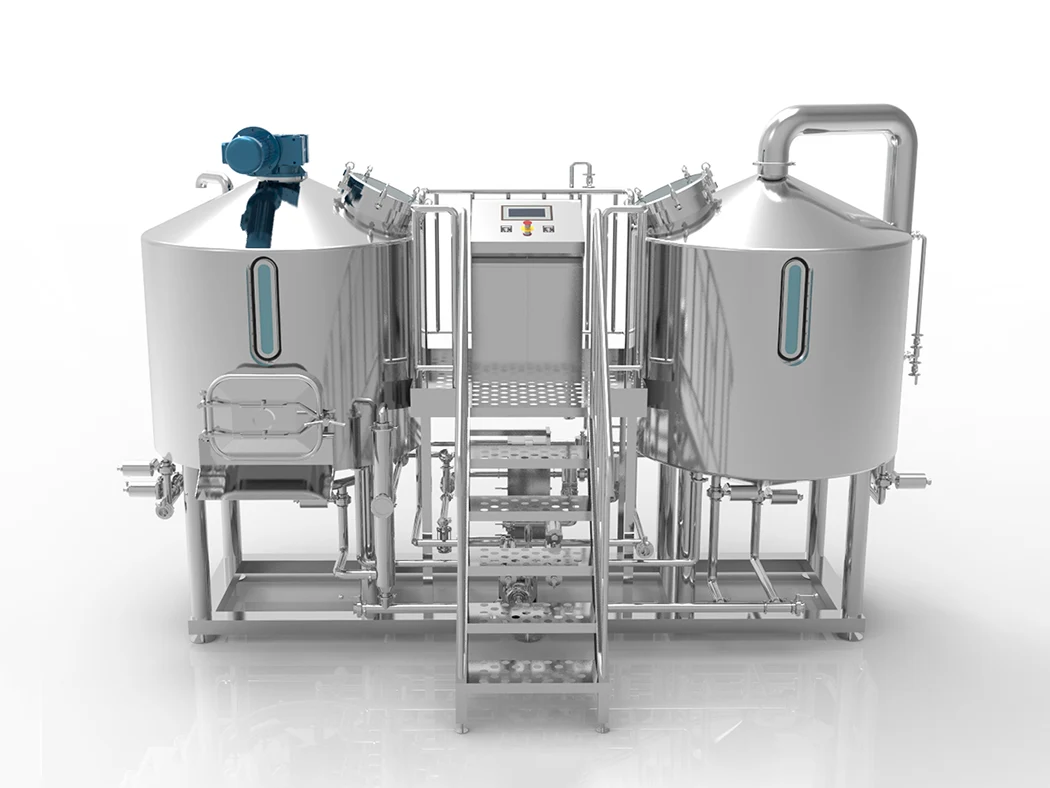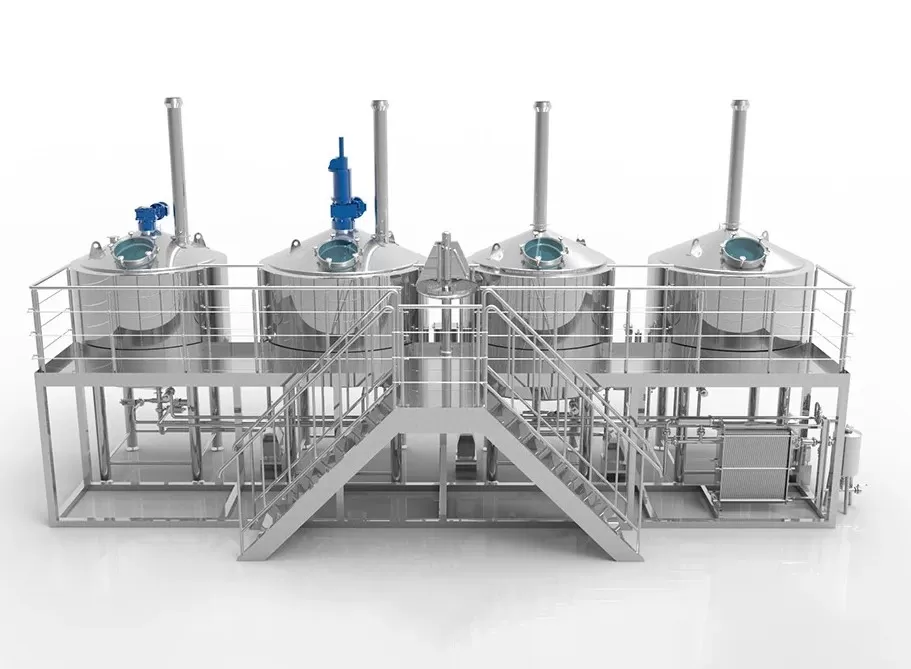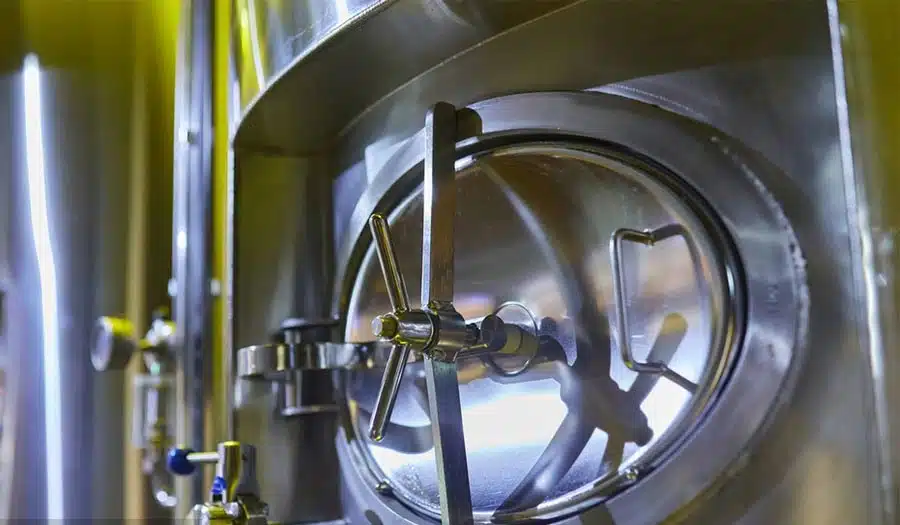In modern food & beverage, pharmaceutical, and chemical production, nádoby z nerezové oceli and tanks have become indispensable equipment. Especially in the processing of alcoholic beverages, dairy, and non-alcoholic drinks, the brewing, mixing, and storage stages demand exceptional hygiene, corrosion resistance, and structural integrity. This guide provides a comprehensive breakdown of stainless steel materials—particularly the differences between 304 and 316 grades—and key application areas. It also compares the structure and function of storage tanks, fermentation tanks, and mixing tanks to assist breweries and manufacturers in equipment selection and process optimization.
Stainless Steel Materials: Core Differences Between 304 and 316
What is Stainless Steel 304?
304 stainless steel, also known as SUS304, is an austenitic stainless steel containing 18% chromium and 8% nickel. It is one of the most widely used stainless steel materials due to its excellent corrosion resistance, formability, and weldability, making it suitable for most food-grade applications.
Funkce:
- Strong corrosion resistance: Stable in most freshwater and food environments.
- Moderate cost: High cost-performance ratio; ideal for moderate hygiene requirements.
- Wide application: Commonly used in milk storage tanks, beverage mixing tanks, and basic liquid storage containers.
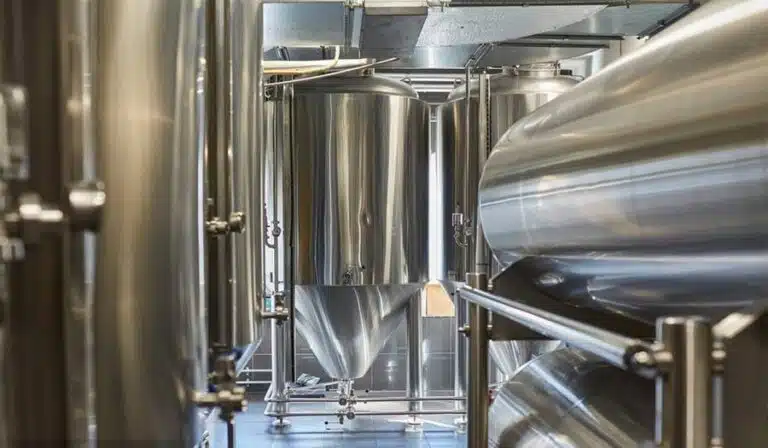
What is Stainless Steel 316?
316 stainless steel adds approximately 2%–3% molybdenum (Mo) to the 304 base, significantly enhancing its resistance to chloride corrosion. This makes 316 a more advanced material for food and pharmaceutical contact, particularly in high-salt or highly acidic environments.
Funkce:
- Enhanced chloride resistance: Ideal for salty beverages, alcoholic drinks, etc.
- Higher sanitary standards: Common in pharmaceuticals, craft beer, and premium dairy processing.
- Higher cost: About 20%–40% more expensive than 304.
|
Property |
304 nerezová ocel |
316 Nerezová ocel |
|
Nickel/Chromium Content |
8% Ni / 18% Cr |
10% Ni / 16% Cr + 2% Mo |
|
Odolnost proti korozi |
Good (suitable for food & beverage) |
Excellent (suitable for acidic/salty materials) |
|
Application Scenarios |
Regular beverages, milk |
Beer, alcohol, pharmaceuticals |
|
Náklady |
Střední |
Vysoká |
Application Scenarios: Core Equipment for Beverages, Dairy, and Alcohol
- Beer Brewing and Fermentation: Beer brewing demands high sealing, insulation, and fermentation control. Fermentation tanks are typically made of 316 stainless steel, equipped with cooling jackets, conical bottoms, and CIP systems to ensure yeast activity and hygiene.
- Dairy Storage and Mixing: Milk is highly prone to bacterial growth, requiring tanks with high cleanliness and polishing standards. 304 or polished 316 is often used, with integrated stirring and temperature control to prevent protein denaturation or sedimentation.
- Beverage Blending and Storage: For juice, carbonated drinks, and functional beverages, blending often involves mixing various ingredients and short-term storage. Mixing tanks typically feature agitators and temperature control, with capacities ranging from 500L (pilot scale) to 5000L (production scale).
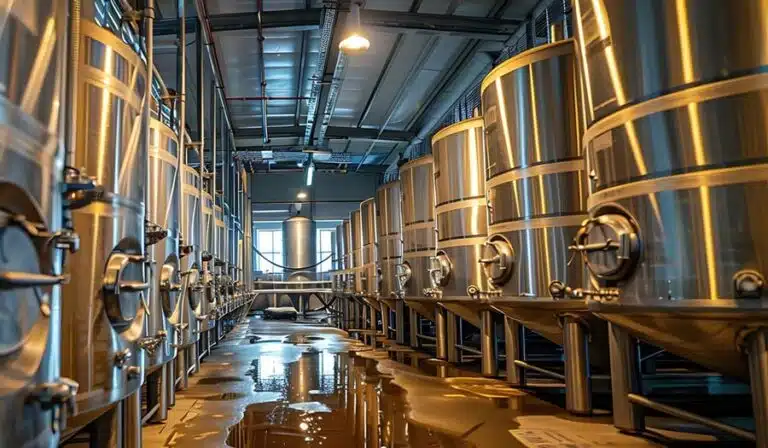
Capacity Selection Guide: From Pilot to Mass Production
Production processes and capacity requirements determine the size range of stainless steel vessels.
The following table outlines typical volume applications:
|
Rozsah hlasitosti |
Example Applications |
Suitable Tank Types |
|
500L |
Lab testing, small-batch brewing |
Small fermenters, mixing tanks |
|
1000L |
Pilot-scale production, craft breweries |
Standard storage tanks, agitator-equipped mixers |
|
2000L |
Regional beverage plants, energy drink blending |
Medium mixing tanks, jacketed tanks |
|
3000L |
Commercial brewing, juice pre-mix, central kitchens |
Fermentation tanks, storage tanks |
|
5000L |
Large-scale factories, dairy hubs, craft beer plants |
Large fermenters, storage tanks |
Storage Tank vs. Fermentation Tank vs. Mixing Tank: Structural and Functional Comparison
|
Funkce |
|||
|
Main Purpose |
Storing liquid materials |
Microbial fermentation, alcohol production |
Ingredient mixing, emulsifying, or blending |
|
Bottom Structure |
Flat or conical bottom |
Typically conical for easy sediment discharge |
Flat or dish bottom for mixing |
|
Agitation System |
Optional (not required) |
Sometimes needed for homogenization |
Essential, with paddles or emulsifiers |
|
Řízení teploty |
Sometimes with jackets |
Standard with cooling/heating system |
Usually with temperature control |
|
Systém CIP |
Optional |
Standard, ensures microbial control |
Generally included for hygiene |
|
Řízení tlaku |
Atmospheric or low pressure |
Pressure-resistant, with safety valve |
Atmospheric |
|
Material Suggestion |
304 nerezová ocel |
Recommended: polished 316 |
304/316 based on material properties |
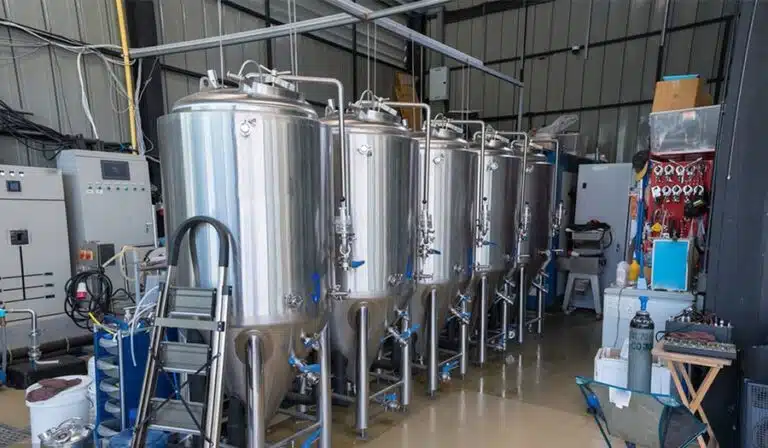
How to Choose the Right Stainless Steel Tank for Your Process
Identify the Process Step: Storage, Mixing, or Fermentation?
Start by clarifying the vessel’s role in the process. For raw material or product storage, choose a simple, easy-to-clean storage tank. For blending multiple liquids or powders with temperature and agitation requirements, select a mixing tank with agitators. For microbial fermentation (e.g., beer, lactic acid bacteria, yeast cultivation), use a fermentation tank with temperature control, conical sediment discharge, and sanitary seals. The functional differences define the type of tank needed.
Choose Material Based on Liquid Properties
Material requirements vary with the type of liquid. For most standard beverages, dairy products, and purified water, 304 stainless steel is sufficient and cost-effective. If the material contains strong acids, salt, or alcohol (e.g., juice, saline drinks, wine), 316 stainless steel is recommended for its superior corrosion resistance. For pharmaceutical or ultra-hygienic applications, mirror-polished 316L stainless steel should be considered.
Match Capacity with Production Volume
Tank size should match daily throughput, cycle times (e.g., fermentation days), and batch sizes. For instance:
- 500L–1000L: Suitable for small-scale breweries, startups, and pilot plants.
- 2000L–3000L: Fits regional production.
- 5000L+: Ideal for continuous, large-scale manufacturing.
Undersized tanks lead to frequent changeovers and inefficiency, while oversized tanks may cause material retention and waste.
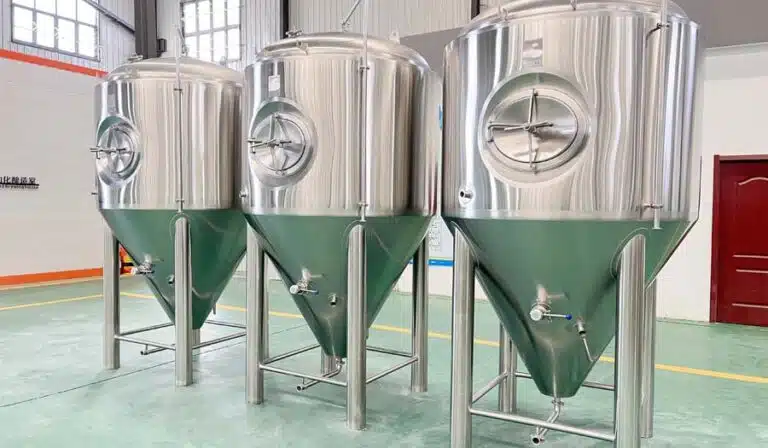
Check for Functional Features and Scalability
A tank is more than just a container—it should have the right auxiliary features. Consider:
- Agitator system (manual or automatic)?
- Heating or cooling jackets?
- CIP (Clean-in-Place) or SIP (Sterilize-in-Place)?
- Integration with automation?
These factors directly impact usability, efficiency, and sanitary safety.
Balance Budget with Lifecycle Costs
Although 316 stainless steel tanks require a higher initial investment, their lower maintenance needs and longer lifespan in corrosive environments can reduce long-term costs. Similarly, CIP systems, temperature control, and pressure gauges add cost but improve consistency and hygiene. Selection should consider upfront cost, maintenance, lifespan, and future capacity expansion.

